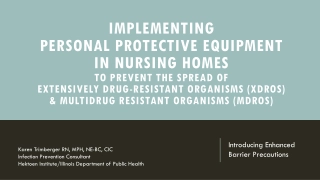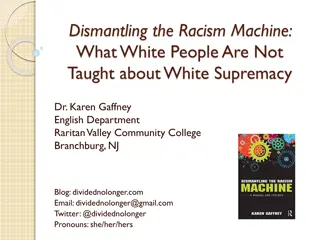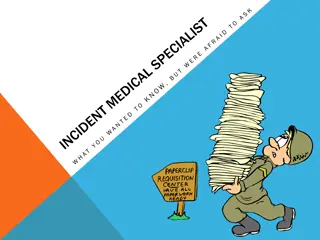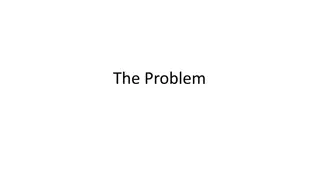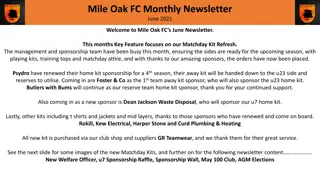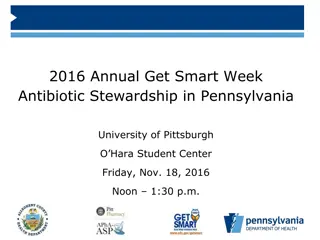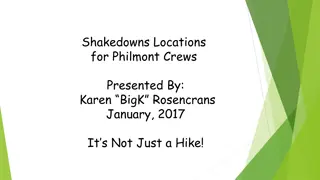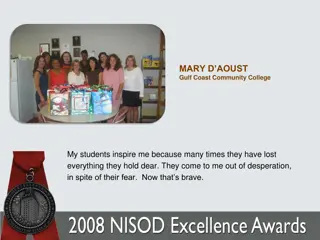
Theatre Door Activity and Infection Prevention Audit
Explore the findings of an audit investigating theatre door movements during joint replacement surgeries to reduce surgical site infections. The importance of infection prevention measures and maintaining a healthy surgical practice is highlighted.
Download Presentation

Please find below an Image/Link to download the presentation.
The content on the website is provided AS IS for your information and personal use only. It may not be sold, licensed, or shared on other websites without obtaining consent from the author. If you encounter any issues during the download, it is possible that the publisher has removed the file from their server.
You are allowed to download the files provided on this website for personal or commercial use, subject to the condition that they are used lawfully. All files are the property of their respective owners.
The content on the website is provided AS IS for your information and personal use only. It may not be sold, licensed, or shared on other websites without obtaining consent from the author.
E N D
Presentation Transcript
Acknowledgements Dr Rohinton Mulla, Director of Infection Prevention & Control & Sue Fox, Head of Infection Prevention & Control Luton & Dunstable University Hospital, Luton for their guidance and support of the audit. Professor Jennie Wilson for her encouragement. One Together for their kind invitation. To all of you for being here today.
Disrupting the flow Theatre access during orthopaedic surgery. Karen Denman Infection Control Surveillance Nurse Luton & Dunstable University Hospital NHS Trust
Look how far weve come from this. Theatre of old Hygiene & cleanliness? Equipment? Theatre attire? Instruments? Lighting? Ventilation? Auditorium to enjoy the show!
to this. Modern theatre Hand hygiene. Sterilisation of instruments, drapes, gowns, gloves, dressings, sutures, etc. Cleaning of theatre. Theatre attire. Antibiotic prophylaxis. Skin preparation. Lighting. Ventilation/filtration.
. or have we? Infection prevention & control measures are imperative in all aspects of patients surgical care from pre-operatively theatre ward wound healing. to prevent SSI s as well as other preventable HAI s. effective only if properly utilised!
Consider this healthcare is at the heart of what we do, so how healthy is our practice?
Disrupting the Flow Audit
Introduction to the Audit. Aims & Objectives To investigate the amount of times theatre doors were opened during joint replacement surgery. To reduce SSI risk and improve patients SSI outcomes. Method Covert, observational audit 5 hip/5 knee replacements chosen at random from operating list. Staff informed that I was observing theatre culture . Sat quietly, discreetly observing & jotting down door movements in a notebook.
Theatre Door Activity During 5 Knee Replacements - March to July 2013. 400 Surgery duration (minutes) Times theatre doors opened Doors opened -Skin prep to incision Doors opened - Incision to closure Revision procedure 345 343 350 320 300 Total surgery duration (minutes) = 667 Total theatre door movements (airflow disruptions) = 730 250 Average theatre door openings per operation = 146 200 Number 150 136 114 106 98 94 100 76 76 70 69 60 52 44 50 30 25 24 23 22 0 Operation 1 Operation 2 Operation 3 Operation 4 Operation 5 Most door openings occurred during the longest duration of knee replacement surgery a revision.
Theatre Door Activity During 5 Hip Replacements - March to July 2013. 200 Total surgery duration (minutes) = 593 Total theatre door openings (airflow disruptions) = 724 Surgery duration (minutes) Times theatre doors opened Doors opened - skin prep to incision Doors opened - incision to closure 178 180 Average theatre door openings per operation = 145 158 162 160 153 151 146 141 135 140 130 121 120 120 Number 100 100 85 80 80 60 48 37 40 32 30 27 20 7 0 Operation 1 The most door openings occurred during the shortest duration of hip replacement surgery. Operation 2 Operation 3 Operation 4 Operation 5
Theatre Door Activity by Surgical Interval (%) During 5 Knee Replacements - March to July 2013. 100 Skin prep. to incision 93.3 Incision to closure 90 83.8 80 71.7 68.4 70 Percentage of times doors opened 63.8 60 Total number of door openings (all periods) = 730 Revision procedure Total number of times doors opened pre-incision = 124 Average of theatre doors opened during skin prep. to incision = 17% 50 Total number of times doors opened post-incision = 606 Average of theatre doors opened during incision to dressing application = 83% 40 31.6 36.2 30 28.3 20 16.2 10 6.7 0 Operation 1 Operation 2 Operation 3 Operation 4 Operation 5 The purpose of pre-operative skin cleansing is to reduce bacterial load!
Theatre Door Activity by Surgical Interval (%) during 5 Hip Replacement Operations - March to July 2013. 120 Skin prep. to incision Incision to closure 100 95.4 83.3 80.1 79.2 Percentage of times doors opened 80 Total number of door openings (all periods) = 724 60 60 Total number of times doors opened pre-incision = 149 Average of theatre doors opened during skin prep to incision = 20.6% Total number of times doors opened post-incision = 575 Average of theatre doors opened during incision to dressing application = 79.4% 40 40 20 20.8 19.9 16.7 4.6 0 Operation 1 Operation 2 Operation 3 Operation 4 Operation 5 An open wound is an open invitation to micro-organisms to settle on the wound bed!
Theatre Door Activity (per minute) During 5 Knee Replacements - March to July 2013. 1.6 1.4 1.4 Revision procedure Theatre door movements per minute of operating time 1.2 1.2 1.1 1.1 1 1 0.8 0.6 0.4 Total operating time (skin prep to dressing application) = 667 minutes Total door movements (airflow disruptions) = 730 0.2 Average door movements (airflow disruptions) per minute of operating time (skin prep to dressing application) = 1.1 0 Operation 1 Operation 2 Operation 3 Operation 4 Operation 5 On average, theatre doors were opened more than once for every minute of operating time - truly alarming!
Theatre Door Activity (per minute) During 5 Hip Replacements - March to July 2013 2.5 2.1 Theatre door movements per minute of operating time 2 1.5 1.5 1.3 1 1 0.7 0.5 Total operating time (skin prep to dressing application) = 593 minutes Total door movements (airflow disruptions) = 724 Average door openings (airflow disruptions) per minute of operating time (skin prep to dressing application) = 1.2 0 Operation 1 Operation 2 Operation 3 Operation 4 Operation 5 Hip replacements did not fare any better, either indicating a need for improvement!
Understanding Why . ..when theatres should be on lockdown during surgery! Communication issues no intercom/ outdated theatre. Storage issues running for required equipment. Staff planning issues breaks, end of shifts. Staff behaviour issues education, social conversation, adjusting behaviours to fit within their dysfunctional environment. Unnecessary movement within theatres?
Where to from here? Audit results were acted upon and appropriate infection prevention strategies were deployed. Needs re-auditing, but staff are likely to be suspicious of my reason for being in theatre and change their behaviours accordingly! Audit other aspects of care/practice along patients surgical pathway that may be contributing to SSI s.
Conclusion. The battle against micro-organisms is ongoing. The greater the attempt to eradicate pathogens, the more they fight back. Duty of care to protect our patients from avoidable and harmful infections. Be mindful of infection prevention strategies and use best practice at all times. Investigate where things might be going wrong, so that they can be put right!
DO YOU KNOW WHAT IS HAPPENING IN YOUR THEATRES? Thank You.


